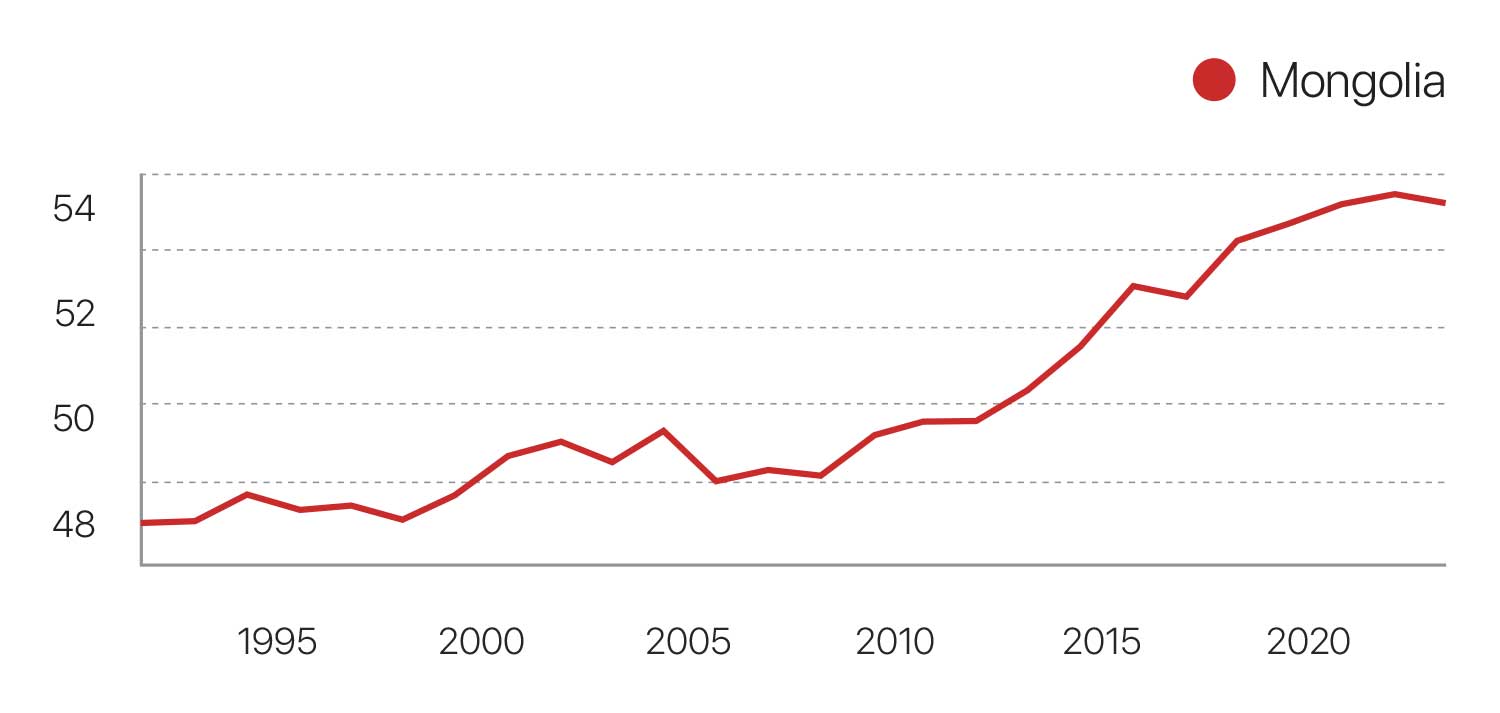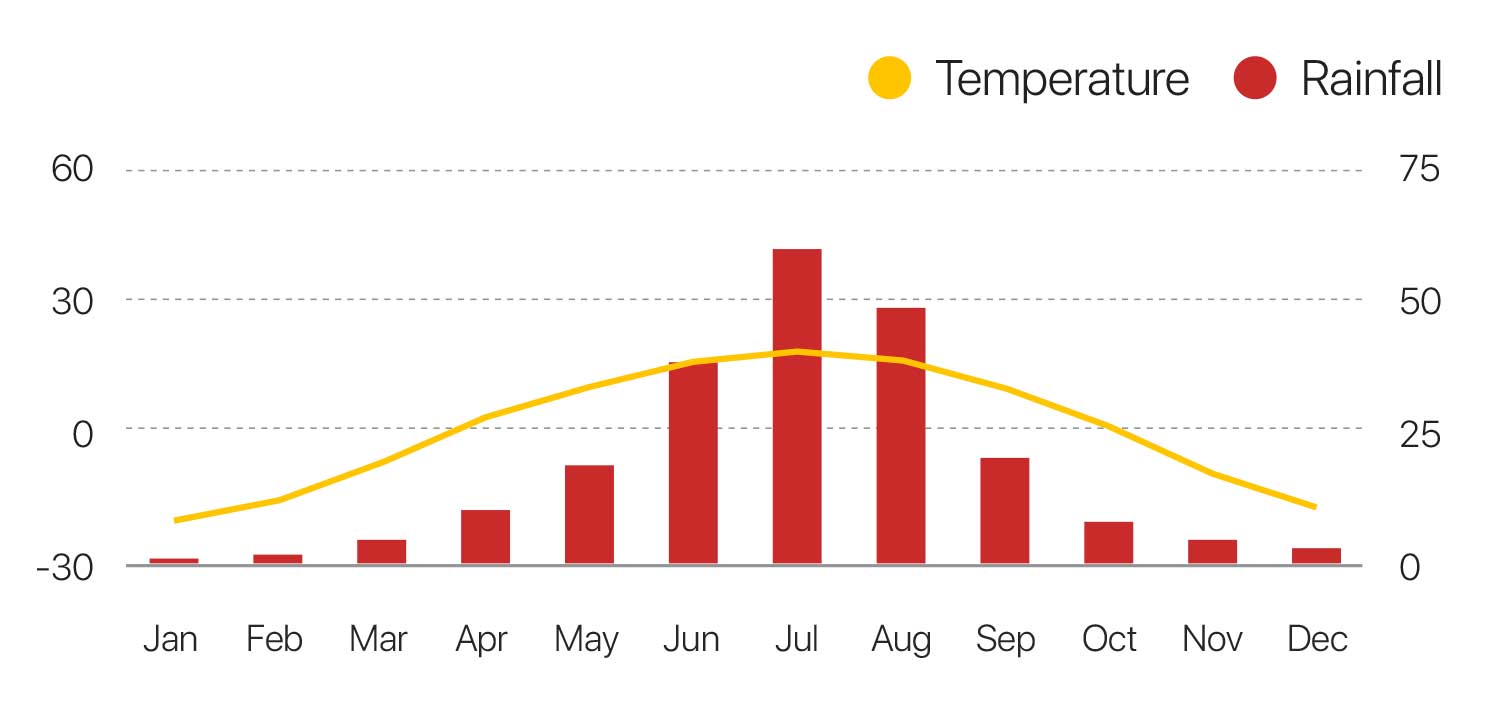The impacts of climate change are already recognizable in Mongolia. Between 1940 and 2015, the average temperature in Mongolia increased by 2.24 Celsius degrees. The temperature during peak heat was greater, and the average temperature during the coldest period slightly increased.
At the same time, the average annual precipitation decreased by 7% from 1940 to 2015. The frequency of thunderstorms and short high-intensity rainfall events is getting more common compared to long-cut rain that moistens the soil.
As a result of these climate changes, summer droughts are becoming more regular with an increased level of dust particles. Dry hot summers followed by cold winters increase the risk of dzud. A dzud is a peculiar weather phenomenon unique to Mongolia. It is an emergency related to extreme cold or snow. About 70% of the grassland in the country is under the influence of desertification due to climate change.
These environmental degradations, disasters, and imbalances in the ecosystem are giving rise to several serious risks and challenges for Mongolia, especially in the areas of agriculture and food production, as well as people’s overall quality of life.
Mongolia is recognized as vulnerable to climate change impacts, ranked 64th out of 181 countries in the 2021 ND-GAIN Index, which captures a country’s vulnerability to climate change and other global challenges, and its readiness to improve resilience.
The Mongolian government is taking policy measures against these.
Mongolia ratified the Paris Climate Agreement in 2016 and released its Third National Communication to the United Nations Framework Convention on Climate Change. Furthermore, the country has adopted national and sectoral strategies and policies such as National Action Plan on Climate Change (2011-2021), the Green Development Policy (2014-2030), the Intended Nationally Determined Contributions under the Paris Agreement (2015-2030), the State Policy on Renewable Energy (2015-2030), and Mongolia’s Sustainable Development Vision 2030.
At a recent high-level meeting of the 76th session of the UN General Assembly, Khurelsukh Ukhnaa, the President of Mongolia, announced an initiative to plant one billion trees. The implementation of the national “One Billion Trees” initiative was officially started in October 2021. The President also urged other countries to allocate up to 1% of the GDP toward environmental protection.
Successful implementation of the national “One Billion Trees” initiative is expected to improve 4% of the 129 million hectares of land that is currently severely affected by desertification. 7.9% of the country’s territory is currently covered by forests and the national objective aims at increasing this indicator to 9% by 2030. Moreover, the action is expected to reduce greenhouse gas emissions by 600,000 tonnes, according to early estimates. The “One Billion Trees” national movement will be rolled out in three phases over the next decade: preparation, intensification, and maintenance.
Recent years have seen rapid urbanization, with more than 50% of the country’s population living in Ulaanbaatar. This transition in lifestyles and livelihoods has presented many challenges including unplanned settlements and air, water, and soil pollution.
A UNICEF study estimated the lost opportunity cost caused by air pollution in Mongolia’s economy over the last 5 years at US$1.4 million. Generations of Mongolian Governments have made attempts to reduce air and environmental pollution, although they have been mostly ineffective.
A marked improvement in air quality in the city was noticed after the government implemented a ban on raw coal in Ulaanbaatar, instead encouraging the usage of refined coal briquettes in 2019.
However, the air quality indicator continued to deteriorate rapidly since 2021, remaining one of the biggest challenges for Mongolia.

